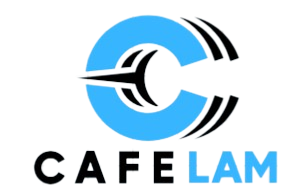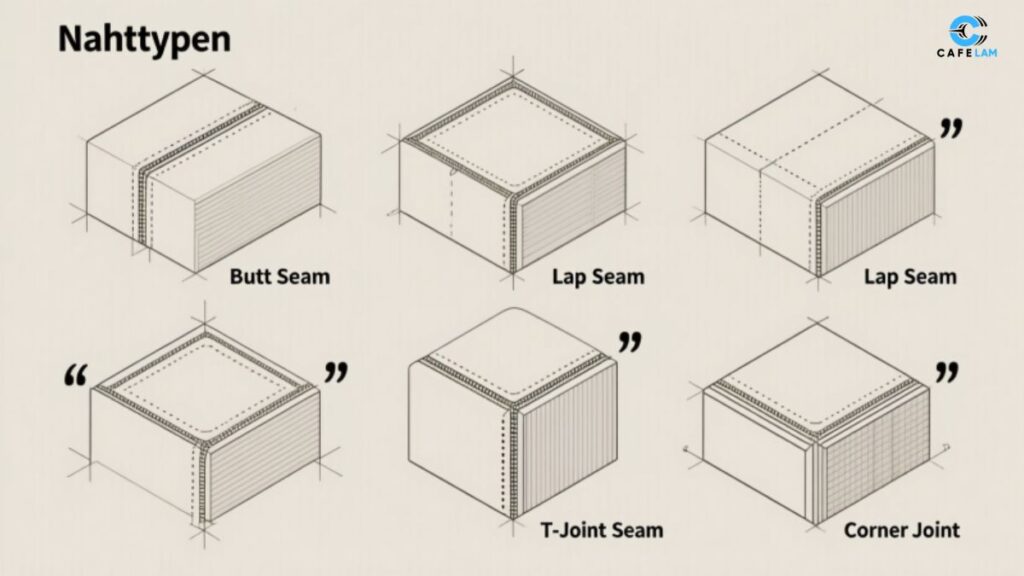When it comes to the world of sewing and fabric construction, one of the most fundamental concepts to understand is the different types of seams, known as nahttypen in German. Seams serve as the foundation of almost every garment and piece of textile, ensuring that pieces of fabric stay securely together. While the overall process of sewing may seem simple at first glance, understanding the various nahttypen can elevate the quality, durability, and appearance of your work. In this guide, we will explore the different nahttypen, their uses, and how to select the right seam for your project. Whether you’re a beginner or an experienced seamstress, this article will provide valuable insights into the art of sewing.
What Are Nahttypen?
In the most basic sense, nahttypen are the various types of seams that are used to join pieces of fabric together. The term Naht translates to “seam” in English, and typen refers to “types.” Thus, nahttypen refers to the different seam techniques and their specific applications in sewing.
The choice of seam depends on the type of fabric, the intended use of the garment or item, and the aesthetic you are aiming for. Different nahttypen offer various strengths, flexibility, and finishes, which makes understanding them essential to producing high-quality, long-lasting garments. From the simple straight stitch to the more complex French seam, every nahttypen serves a unique purpose. Understanding these types of seams allows you to choose the best method for the job, ensuring your project’s success.
Expand your knowledge and check out more posts on our blog!
Common Nahttypen and Their Uses
-
Straight Seam (Gerade Naht)
The straight seam is one of the most basic and widely used nahttypen. It is simply a straight line of stitches that joins two pieces of fabric together. This type of seam is commonly used for general sewing tasks, such as joining panels in shirts, dresses, or pants. When done properly, a straight seam creates a strong, durable connection between the fabric pieces. Depending on the fabric’s thickness, you may need to adjust the stitch length or tension to avoid puckering. -
French Seam (Französische Naht)
A French seam is a technique that encloses the raw edges of the fabric within the seam itself, creating a neat, finished look on both the inside and outside of the garment. This nahttypen is especially useful when working with lightweight or delicate fabrics, such as chiffon or silk, that may fray easily. French seams are commonly used in high-end fashion and garments that require a polished, clean finish. This type of seam is often found in blouse cuffs, dresses, and other elegant clothing items. -
Overlock Seam (Overlock Naht)
The overlock seam, also known as a serged seam, is a specialized type of nahttypen used primarily to finish the raw edges of fabric to prevent fraying. This technique is typically done using a serger, a specialized sewing machine that cuts and sews the fabric in one pass. Overlock seams are perfect for stretchy fabrics, such as knitwear or jersey, as they provide both a neat edge and added flexibility. Overlock seams are common in activewear and casual clothing, as they help to maintain the garment’s structure while also preventing fabric from unraveling. -
Flat-Felled Seam (Flachnaht)
A flat-felled seam is a strong and durable seam commonly used in denim and other heavy fabrics. This nahttypen involves folding the raw edges of the fabric to the inside and stitching them down, creating a flat, smooth finish. This type of seam is often used in jeans and workwear, where durability is important. Flat-felled seams not only provide strength, but they also create a neat finish that’s suitable for garments that will experience a lot of stress or wear and tear. -
Double-Needle Seam (Doppelnadel Naht)
The double-needle seam is a decorative and functional nahttypen that uses two needles to create parallel lines of stitching. This type of seam is commonly seen in sportswear and t-shirts, where it adds extra strength and a professional finish. The double-needle seam allows for the creation of two parallel rows of stitches, making it ideal for hems, cuffs, and necklines.
Choosing the Right Nahttypen for Your Fabric
The fabric you are working with plays a crucial role in determining which nahttypen is most suitable for your project. Different fabrics have varying properties that make certain seams more appropriate than others.
-
Lightweight Fabrics: Fabrics like chiffon, organza, or voile are delicate and prone to fraying. In these cases, a French seam or a rolled hem might be the best choice. These seams offer a clean finish and prevent raw edges from showing. Additionally, a narrow straight seam can also work, provided that the fabric is handled with care.
-
Medium-Weight Fabrics: Cotton, linen, and rayon fall into this category. For these fabrics, a straight seam, flat-felled seam, or overlock seam can provide both strength and a neat finish. The overlock seam is particularly effective for preventing fraying in fabrics like cotton or linen.
-
Heavy Fabrics: Denim, canvas, and wool are examples of heavy fabrics that require a more durable seam. Flat-felled seams or double-needle seams are excellent choices for these materials, as they provide both durability and a professional finish. A double-needle seam, in particular, can handle the thickness of heavy fabrics while adding an aesthetically pleasing parallel stitch.
-
Stretch Fabrics: When working with stretch fabrics like jersey, spandex, or lycra, it is important to choose seams that will stretch with the fabric without breaking. Overlock seams are ideal for this purpose, as they are designed to stretch and move with the fabric. Additionally, a zigzag stitch or a stretch stitch can also provide the flexibility needed for these types of fabrics.
Tips for Sewing Different Nahttypen
When working with different nahttypen, there are several tips to ensure that your seams are strong, durable, and professional-looking:
-
Use the Right Needle: The needle you choose can greatly affect the outcome of your seam. For delicate fabrics, opt for a fine needle, while heavier fabrics require a thicker needle. For stretch fabrics, use a ballpoint needle that will glide smoothly through the fabric without damaging it.
-
Test the Stitch on Scraps: Before starting your project, always test the seam on scrap pieces of fabric to ensure that the stitch length, tension, and needle choice are appropriate for your material.
-
Press as You Sew: Pressing your seams as you go is crucial for achieving a neat and professional finish. Use an iron to press your seams open or to one side, depending on the seam type, to eliminate any puckering or distortion.
-
Finish Raw Edges: Always finish the raw edges of your seams to prevent fraying. Use an overlock stitch, French seam, or bias binding to secure the edges and extend the lifespan of your garment.
Conclusion
Understanding the different nahttypen is an essential skill for anyone interested in sewing. As it allows you to choose the right technique for the fabric and the intended purpose of the garment. From the simple straight seam to the intricate French seam. Each nahttypen serves a specific function, ensuring that your garment is both durable and aesthetically pleasing. Whether you are a beginner or a seasoned pro, mastering the art of seam construction will take your sewing projects to the next level. Allowing you to create high-quality, long-lasting garments with confidence.
Searching for more informative articles like this? Then, please keep browsing our blog!
Frequently Asked Questions (FAQs)
1. What is the best seam for lightweight fabrics?
For lightweight fabrics, a French seam or a narrow straight seam is ideal. These seams enclose the raw edges of the fabric, preventing fraying and creating a clean, polished finish.
2. Can I use a flat-felled seam on stretchy fabrics?
Flat-felled seams are generally not suitable for stretchy fabrics, as they do not allow the fabric to stretch. Instead, use an overlock seam or a zigzag stitch for stretchy materials.
3. What is the difference between a straight seam and a double-needle seam?
A straight seam uses a single row of stitching to join fabric pieces, while a double-needle seam uses two needles to create parallel rows of stitching. The double-needle seam adds strength and a decorative touch to the garment.
4. How can I prevent raw edges from fraying?
To prevent raw edges from fraying, use an overlock seam, French seam, or bias binding to finish the edges. These techniques will securely enclose the fabric’s raw edges and keep them from unraveling over time.







